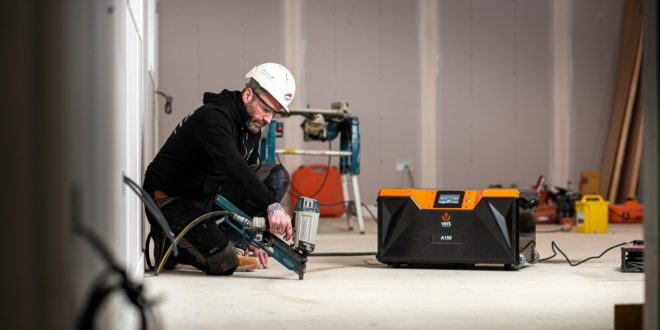Noise is often regarded as a common occupational hazard in many workplaces. But, aside from the obligations on owners and managers to provide a safe environment for their colleagues, a noisy workplace is a less than optimally efficient one.
In addition to ear damage, non-reversible tinnitus and loss of hearing, it is long-established that excessive noise is a real danger to health.
Not only can it cause irritation and loss of concentration, sleep disturbance and stress, but lead also to serious long-term conditions including high blood pressure and diabetes.
All too often, one of the sources of workplace noise is compressors, and though larger compressors are often housed in separate compressor rooms to prevent impact on employees, colleagues are often obliged to work close to the compressor and bear with significant noise when it is in operation.
The most common unit of noise measurement is the decibel (dB), named after the Scots-born inventor of both the telephone and the audiometer, Alexander Graham Bell. The higher the decibel measurement, the louder the noise.
For example, a quiet office, or a refrigerator, scores around 50dB, while a casual conversation comes in at around 60dB.
Typical city traffic noise is around 80dB. It is often not understood that the decibel scale is not linear, so a sound that is 80dB is ten times as intense as one that is 70dB.
Each 10dB increment increases the intensity by ten times and sounds twice as loud.
Under the Control of Noise at Work Regulations 2005, UK employers are obliged to assess the risk to workers’ health and provide them with information and training if the noise level is 80 decibels and above.
Employers must provide hearing protection and hearing protection zones when daily or weekly average exposure is up to 85 decibels.
Even after any reduction in exposure provided by hearing protection, there is an upper limit value of 87 decibels above which workers must not be exposed.
So if noise above 80dBA legally requires steps to be taken to mitigate the risks, taking time to select equipment which has low noise from the outset has to make sense, since the best way of reducing exposure to noise damage is by controlling the noise at source.
And that’s where a Vert compressor comes into its own:
- With a noise level of 62dB, the innovative Vert Conical Rotary Compressor (CRC) technology minimises noise emissions from moving parts.
- The inherently balanced technology has low vibration and therefore there is minimal impact on any surrounding equipment.
- Vert compressors offer continuous operation with a 100% duty cycle, so there are no noisy on/off sounds associated with competitor compressors that operate on a 50% or 25% duty cycle.
 Engineer News Network The ultimate online news and information resource for today’s engineer
Engineer News Network The ultimate online news and information resource for today’s engineer






